
Fighting Norway is a 10-minute 1943 Canadian documentary, part of the wartime Canada Carries On series of short films produced by the National Film Board of Canada. The film was directed by Sydney Newman, one of a number of shorts that were intended for theatrical release.

Warclouds in the Pacific is a 20-minute 1941 Canadian documentary film, part of the Canada Carries On series of short films by the National Film Board of Canada. The film was produced, written and directed by Stuart Legg and narrated by Lorne Greene. Warclouds in the Pacific, which warned of an imminent Japanese attack, was released just one week before the attack on Pearl Harbor.

Now – The Peace is a film produced and directed in 1945 by Stuart Legg for the National Film Board of Canada series The World in Action, with unaccredited narration by Lorne Greene. Over its nearly 21-minute running time, circumstances during the immediate postwar period following the Second World War, leading to the formation of the United Nations are discussed.

Ferry Pilot is a film produced in 1942 by Stuart Legg and Ross McLean for the National Film Board of Canada series The World in Action, in cooperation with the United Kingdom Ministry of Information and the Crown Film Unit. The film has an unaccredited narration by broadcaster Lorne Greene.
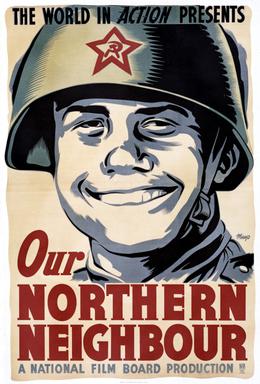
Our Northern Neighbour is a film produced in 1944 by Stuart Legg and directed by Tom Daly for the National Film Board of Canada series The World in Action. The film is narrated by broadcaster Lorne Greene.

Everywhere in the World is a 16-minute 1941 Canadian documentary film about the contributions of the United States and Commonwealth countries to the Allied war effort. The film was made by the National Film Board of Canada (NFB) as part of the wartime Canada Carries On series. It was produced by Stuart Legg. The film's French version title was Partout au monde.
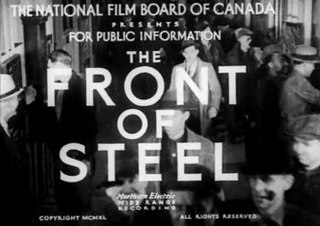
The Front of Steel is an 11-minute 1940 Canadian documentary film, made by the National Film Board of Canada (NFB) as part of the wartime Canada Carries On series. The film, directed by John McDougall and produced by Stuart Legg, is an account of the value of steel in war production in Canada during the Second World War.
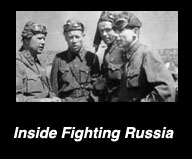
Inside Fighting Russia is a 1942 22-minute Canadian short documentary film produced by the National Film Board of Canada (NFB) for distribution by United Artists, as part of the wartime The World in Action series. The film documents Russia's fight against Nazi Germany during the Second World War. Inside Fighting Russia is produced by Stuart Legg, and narrated by Lorne Greene. The film's French version title is La Russie sous les armes.

The Battle for Oil is a 19-minute 1942 Canadian documentary film, made by the National Film Board of Canada (NFB) as part of the wartime Canada Carries On series. The film was produced by Raymond Spottiswoode and directed and edited by Stuart Legg.The Battle for Oil describes the strategic value of oil in modern warfare. The film's French version title was La Bataille du pétrole.

Break-through is an 11-minute 1944 Canadian documentary film, made by the National Film Board of Canada (NFB) as part of the wartime Canada Carries On series. The film documents the attack on Fortress Europe during the Second World War and the advance of Allied forces to the borders of Nazi Germany. Break-through was produced by James Beveridge. The film's French version title is L'assaut.

The Gates of Italy is a 21-minute 1943 Canadian documentary film, made by the National Film Board of Canada as part of both the wartime Canada Carries On and The World in Action series. The film was written, directed and produced by Stuart Legg and Tom Daly. The Gates of Italy describes the last days of Benito Mussolini's rule over Italy in 1943 during the Second World War.

The Voice of Action is a 16-minute 1942 Canadian documentary film, directed by James Beveridge and produced by Raymond Spottiswoode. The short film was made by the National Film Board of Canada (NFB) as part of the wartime Canada Carries On series. The Voice of Action describes the importance of the Canadian Broadcasting Corporation (CBC) in the Second World War. The French version title of The Voice of Action is Dynamisme des ondes.

Letter from Overseas is a 15-minute 1943 Canadian documentary film, made by the National Film Board of Canada (NFB) as part of the wartime The World in Action series. The film describes the training and operational use of Canadian Army soldiers in 1943 during the Second World War.

Food - Weapon of Conquest is a 22-minute 1941 Canadian documentary film, made by the National Film Board of Canada (NFB) as part of the wartime Canada Carries On series. The film was written, directed and produced by Stuart Legg. Food - Weapon of Conquest shows the food shortage in Nazi-occupied countries in the Second World War, contrasted with the Allied response to the global food crisis. The film's French version title is Une armée marche sur son estomac.

Pincer on Axis Europe is a 20-minute 1943 Canadian documentary film, made by the National Film Board of Canada as part of the wartime Canada Carries On series. The film describes the Allied invasion of North Africa in 1942 during the Second World War.

Quebec – Path of Conquest is an 11-minute 1942 Canadian documentary film, made by the National Film Board of Canada as part of the wartime Canada Carries On series. The film was directed by Radford Crawley and produced by Raymond Spottiswoode. Quebec – Path of Conquest describes the importance of the province of Quebec to Canada and the Allied war effort during the Second World War. The film's French version title is Québec, tremplin stratégique.
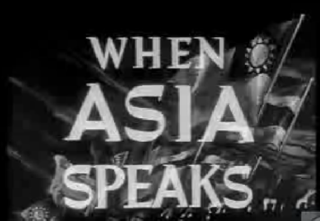
When Asia Speaks is a 19-minute film produced in 1944 by Stuart Legg and directed by Gordon Weisenborn for the National Film Board of Canada series The World in Action. The film is narrated by broadcaster Lorne Greene. When Asia Speaks describes the disparity between the riches of Asia and the poverty of the masses during the Second World War that have led to nationalist movements in Asia. The film's French version title is Le Réveil de l'Asie.

Headline Hunters is an 11-minute 1945 Canadian documentary film, part of the wartime Canada Carries On series, produced by Alan Field. The short film was made by the National Film Board of Canada. The film was a tribute to Canadian war correspondents who reported from the front lines in the Second World War.
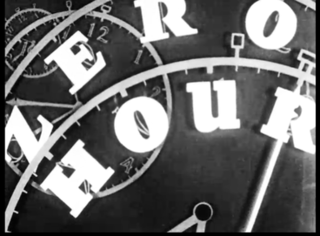
Zero Hour is a 22-minute 1944 Canadian documentary film, made by the National Film Board of Canada (NFB) as part of both the wartime Canada Carries On and The World in Action series. The film was produced by Stuart Legg. Zero Hour describes the Axis and Allied invasions that have taken place during the Second World War.

Tomorrow's World is a 20-minute 1943 Canadian documentary film, made by the National Film Board of Canada (NFB) as part of the wartime Canada Carries On series. The film, produced by Raymond Spottiswoode, described the importance of conservation and rationing during the Second World War, and how the world would be more prosperous and better planned because of the war efforts. The French version of Tomorrow's World is titled Le Monde de demain.




















